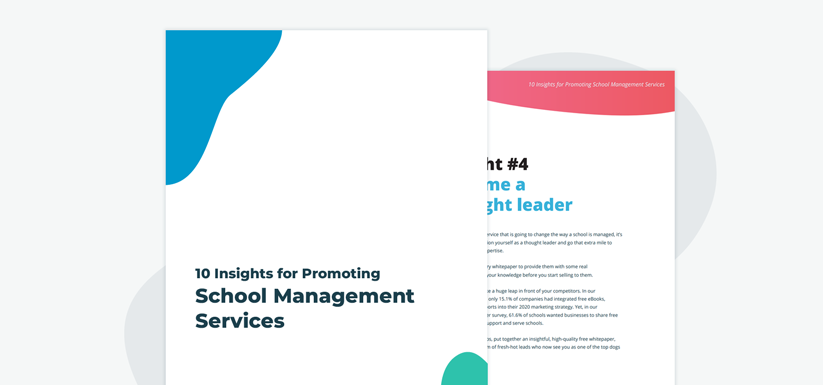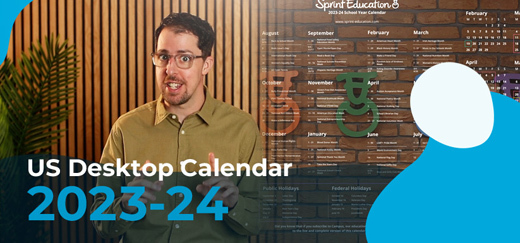3 Steps Towards a Killer Call-To-Action
3 Steps Towards a Killer Call-To-Action
Building the content of your education email marketing campaign can be a daunting task. You deliberate for hours which p...
Building the content of your education email marketing campaign can be a daunting task. You deliberate for hours which p...
Building the content of your education email marketing campaign can be a daunting task. You deliberate for hours which picture you want to include, what products you’d like to mention, and what percentage of discount you might be offering. So much so that these finer details override the main aim of the email: To create impact and generate leads.
Using a great call-to-action (CTA) will undoubtedly make your education marketing more successful. It is the yellow brick road within your marketing; a good CTA offers each recipient a clear way to venture further down the path of engagement.
CTA’s come in many formats; it may be a contact web form, a sign up to your newsletter, free download, or a simple limited time offer for the reader to claim. It may even be a question, ‘Mr Smith, did you hear about our conference next week? We wondered if you’d like to attend’.
The type of CTA you use will depend on what you sell, how you generate leads, and how you engage with your audience. It may be that, in order for you to get your playground equipment into schools, your sales funnel requires you to set up a face-to-face meeting with the Bursar or Head Teacher. Alternatively, you may sell stationery products online directly through your website, in which case a meeting may not be necessary. Either way, you will need a way to qualify your leads, and a great CTA will make this easier for you to track, monitor and react to your prospects' actions.
Set your goals
Before you start creating your email it is important to ask yourself – what am I trying to achieve therefore what do I want to the recipient to do with this email? Be realistic, teachers are busy people. Bare this in mind when considering your call to action. If you want them to react with a phone call, make this super easy for them. Don’t expect them to visit your website and go hunting down your contact number, highlight it clearly in the email content as text; and avoid embedding your number within an image, as this may not be visible if the recipient has images turned off.
In addition, it is worth considering your recipients’ general daily routine. What time are you planning to email Maths teachers for example? If you’re launching at 10.30, it is likely that they will teaching, so a phone call may not be a convenient way for them to tell you they’re interested.
If you want them to reply via email, do not forget to ensure your email address is included. Try to use a personable one rather than a generic email address. For example, martin@schoolservices.co.uk looks far more approachable than sales@schoolservices.co.uk.
Positioning is pivotal to success
Where you put your CTA can often be as important as the CTA itself. Aim to put it above the fold (the part of the email that is visible without scrolling), consider various email clients and where it would appear on their preview pane. Avoid making the reader scroll down the page to find it as this will inhibit its impact and potentially lose you leads.
Place it in an obvious position too, don’t put your Register your Interest hyperlinked amongst a handful of words within a paragraph as it won’t be glaringly obvious to the reader that this is where they need to click. Try placing the CTA or Link on a separate line so it doesn’t get lost within body text.
A Good CTA Doesn’t Always Mean a Good CTR.
It’s easy to get bogged down by post-campaign stats; however, a good call-to-action doesn’t always result in a good click-through-rate (CTR).
In fact, some of the best performing campaigns have resulted in average, and often a below average CTR. This is usually where the campaign has had such an impact with the recipients, they replied directly to the email or picked up the phone, which wouldn’t have registered as a click on the stats.
The success of one email campaign to teachers can be determined quite differently to another. A campaign receiving many replies would generally be considered a success, as would 100’s of downloads of your latest whitepaper. It depends on what your end goal is. However, there is one thing that is consistent with all successful email marketing campaigns, and that is the implementation of a good call-to-action. So next time you think about creating your email marketing campaign, set your end goal and be realistic in what you want the recipient to do upon receiving your email.
Tags
Marketing to Schools
Selling to Schools
Emailing Teachers
Selling to Teachers
UK Schools Marketing
Email Calls to Action
How to Sell to Schools
Similar Articles


Marketing School Management Services to Schools
Learn 10 game-changing insights especially for school management service providers to enhance your education marketing campaigns when emailing schools.


The Beginner’s Guide to International Schools Marketing
Understand and sell to the types of education establishments across the globe.


Expert marketing to K-12 support and solutions
Expert marketing to K-12 solutions
Email Principals, Teachers, and District Staff Inboxes
Email teachers and staff inboxes
Sell More to US and Global Schools and Districts
Sell more to schools and districts



























